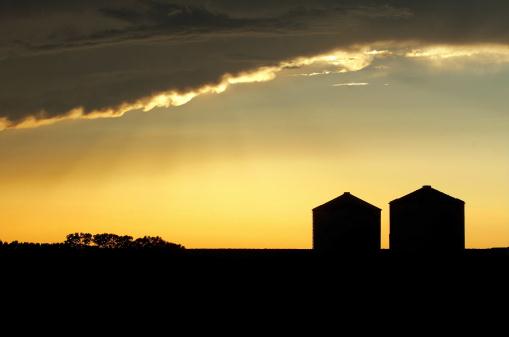
Drought Potential
Welcome to the 9th month in a row of drier than normal weather for most of Minnesota. You have to go back to June, 2014 for a wetter than average month, when a record 11.36 inches fell at MSP. I have fond memories of vacuuming up muddy water in my basement. Since then the biggest, wettest storms have taken a southerly detour.
Unless the pattern breaks, and soon, we may be facing significant drought by mid-summer. It’s too early to panic but the more I stare at the maps the more concerned I become.
And new research from Keith Harding and Peter Snyder at the University of Minnesota suggests that a rapidly changing climate may be sparking fewer summer storms over the Northern Hemisphere. More days between rain events, but when it does rain it comes down in a tropical deluge – much of that water running off and not soaking into the soil. Fluke or trend? Stay tuned.
Now that we’ve seen a freakishly early run of 60s and 70s, now that we’re hopelessly spoiled, 40s and 50s into next week will feel like a cool front. You may even need a jacket this weekend as highs struggle to reach 40F but subzero nights are behind us now.
Any tournament storms? Are you kidding me?
It doesn’t rain or snow here anymore.
* File photo above: Seth Perlman, AP.

Growing Precipitation Deficit. Most of Minnesota needs 2-4″ of precipitation to pull out of a mild to moderate drought. Frost is rapidly thawing out of the ground, and fields and gardens are going to need a good soaking, after running a 9-month precipitation deficit in the Twin Cities and much of greater Minnesota. Map: Ham Weather.
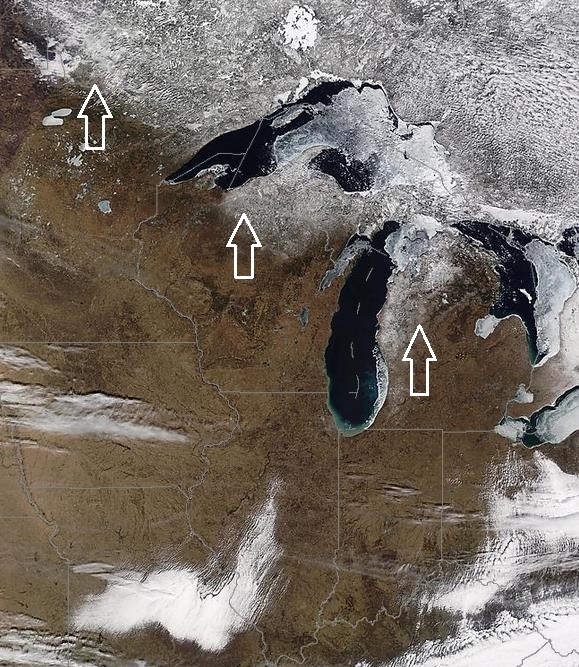
Shrinking Snowpack. After 50s, 60s and even a few 70s much of last week I guess none of us are terribly surprised by a lack of snow across all of Iowa, and most of Minnesota and Wisconsin. Keep in mind the sun is now as high in the sky as it was in late September. Even with air temperatures in the 40s it feels pretty good out there. NASA Modis image: University of Wisconsin.

Couple of Chilly Dips. Winter is over, although we’ll see a few burps of Canadian air in the coming weeks, the best chance of actually reaching for a jacket or sweatshirt this weekend. Temperatures will still trend a few degrees above average looking out 2 weeks or so. No more serious warm fronts in sight; no storms either. Charting: Weatherspark.
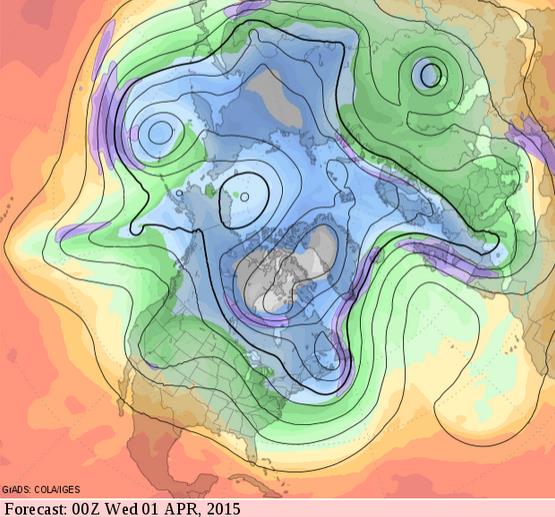
A Dry, Seasonably Cool Extended Outlook. Although I don’t see any record warmth returning to the Upper Midwest, Great Lakes or New England anytime soon, the pattern won’t favor any major rain or severe storm events either; no snow for Boston (!) either. 500 mb winds valid April Fool’s Day are mainly zonal, implying 40s and 50s close to home. Grilling weather. Source: GrADS:COLA/IGES.

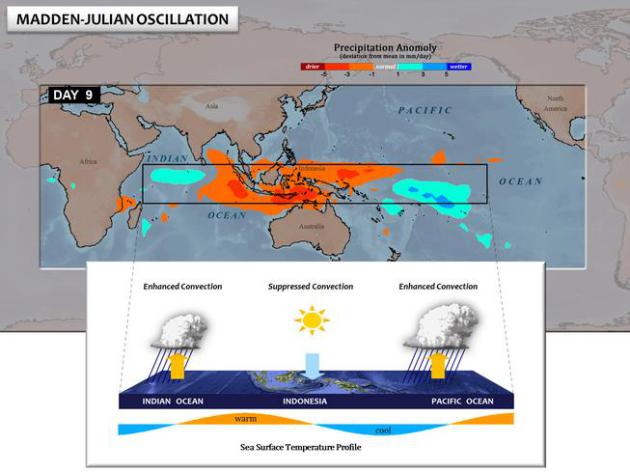
File image credit: UCAR.

Boston Clinches Snowiest Season on Record Amid Winter of Superlatives. The Washington Post has a story with some fascinating (and vaguely terrifying) weather nuggets and statistics; here’s a clip: “…The city’s five-, seven-, 10-, 20-, 30- and 40-day snowfall records were all broken within a couple of weeks. February became the snowiest month on record after more than 45 inches fell in just two weeks. By the 28th, the month’s total was 64.8 inches. Fastest six-foot snowfall record? Broken — 18 days. Fastest 90-inch snowfall record? Broken — 23 days. To top it off, it has been brutally cold this winter across the entire Northeast…”

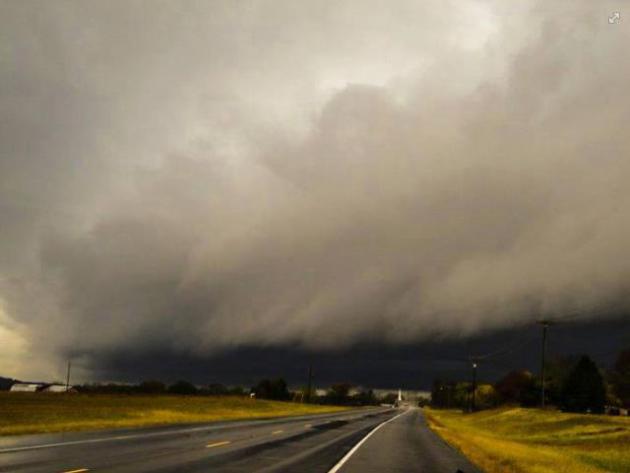




TODAY: Clouds increase during the day. Winds: SW 5-10. High: 46
WEDNESDAY NIGHT: Patchy clouds, passing sprinkle or flurry. Low: 32
THURSDAY: Clouds linger, above average temps. High: 49
FRIDAY: More clouds than sun, quiet. Wake-up: 34. High: near 50
SATURDAY: Sunny intervals, turning cooler. Wake-up: 31. High: 39
SUNDAY: Bright sun, light winds. Wake-up: 25. High: 40
MONDAY: Clouds increase, late shower? Wake-up: 27. High: 43
TUESDAY: Some sun, milder breeze kicks in. Wake-up: 29. High: 51
Climate Stories…

The Arctic’s Climate Change is Messing With Our Weather. Here’s something I’ve been observing – and talking about quite publically for the better part of 15 years. St. Thomas professor and climate scientist John Abraham has the article at The Guardian; here’s an excerpt: “…The authors found that the summer zonal winds have weakened. The reason for the weakening is that since the Arctic is warming faster than the rest of the planet, the temperature difference between the Arctic and the lower latitudes is getting smaller. It is this temperature difference which maintains the wind speeds. The authors also found that eddy kinetic energy is decreasing. So what does all this mean? Well two things. First, it means that there are either fewer or less intense summer storms or a combination of both. But secondly, it means that weather patterns can get “stuck”…”
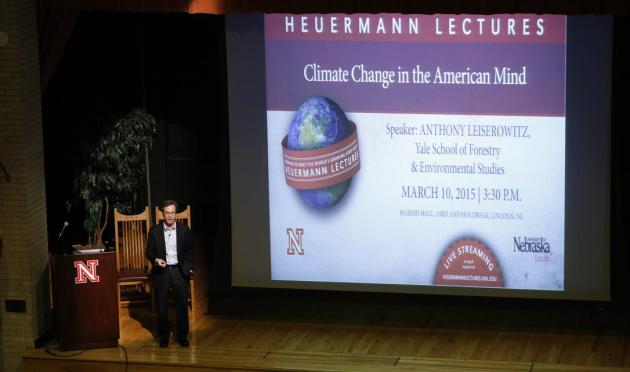
Expert: American’s Acceptance of Climate Change is Increasing. Here’s a snippet of a story from the University of Nebraska – Lincoln: “…The number of Americans who think climate change is not real continues to decline but a well-funded and documented “denial industry” uses strategies similar to those used to try to discredit the link between tobacco and human health in which “doubt was the product,” he said. One of the reasons for doubt about global warming is that it is invisible. “Carbon dioxide is pouring out of buildings, tailpipes and people’s mouths. We are standing in a volcano of carbon dioxide rising out of the atmosphere,” Leiserowitz said. “It is the same in every city but we can’t see it so it is out of sight, out of mind…”
Photo credit above: “Anthony Leiserowitz, director of the Yale Project on Climate Change Communication and research scientist in the School of Forestry and Environmental Studies at Yale, speaks Tuesday, March 10, as part of the Heuermann Lectures in the Institute of Agriculture and Natural Resources at the University of Nebraska-Lincoln.” (Craig Chandler/UNL Communications).

Can Science Find Common Ground With Evangelicals. The short answer appears to be yes. Here’s an excerpt from Scientific American: “…God created a sustainable world … but he also told us to take care of it,” added Hescox, president and CEO of the Evangelical Environmental Network. Hescox said he often quotes Genesis 2:15, where God orders Adam to “care for” the Garden of Eden. If he’s feeling more confrontational, he may point to the Book of Isaiah, which includes the line “the earth is polluted because of its inhabitants, who have transgressed laws [and] violated statutes.” “Human beings are accountable for how they care about God’s creation. … To not tend to creation, to not steward it as a shepherd, as a renter, a leaser of the land, is definitively unbiblical, untheological,” he said…”
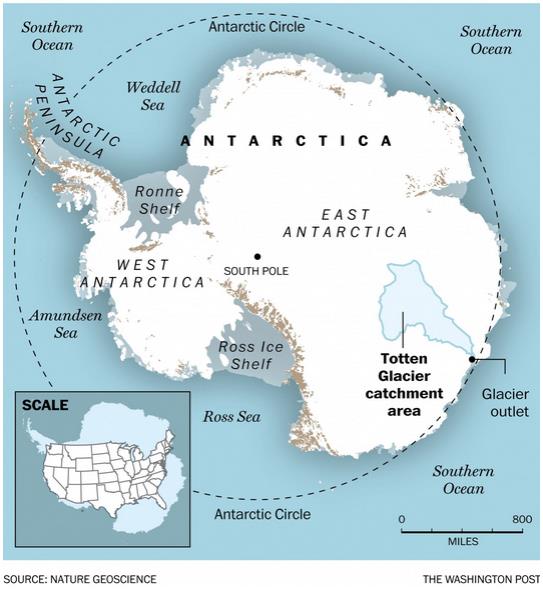
The Melting of Antarctica Was Already Really Bad. It Just Got Worse. Alarmist hype? I sure hope so. Here’s an excerpt of a story from Chris Mooney at The Washington Post: “…The findings about East Antarctica emerge from a new paper just out in Nature Geoscience by an international team of scientists representing the United States, Britain, France and Australia. They flew a number of research flights over the Totten Glacier of East Antarctica — the fastest-thinning sector of the world’s largest ice sheet — and took a variety of measurements to try to figure out the reasons behind its retreat. And the news wasn’t good: It appears that Totten, too, is losing ice because warm ocean water is getting underneath it...”

Arctic Sea Ice Closes In On Record Low For The Winter. Andrew Freedman has an update at Mashable; here’s a clip: “In another sign of how swiftly global warming is reshaping the Arctic, it is likely that scientists will declare a record low annual maximum sea ice extent as early as Thursday. This means that the sea ice cover, which has been in a steep decline in recent decades, built up to a record low level this winter. The winter sea ice extent maximum usually occurs in March, but based on a recent decline in sea ice since the start of the month, as well as ocean temperatures in areas that currently lack sea ice cover, scientists are likely to declare that the maximum actually occurred on or about February 25…”
Image credit: “Arctic sea ice extent for 2015 compared to other recent years and the recent average. The likely winter peak indicated with arrow.” National Snow and Ice Data Center and Mashable.

Baked Alaska. The warming taking place in Alaska is nothing short of breathtaking, with implications across the board. Here’s an excerpt of an eye-opening piece from Slate and Mother Jones, which reports the last frontier’s weather is broken: “…But it’s unclear how long that will be possible. Alaska is heating up at twice the rate of the rest of the country—a canary in our climate coal mine. A new report shows that warming in Alaska, along with the rest of the Arctic, is accelerating as the loss of snow and ice cover begins to set off a feedback loop of further warming. Warming in wintertime has been the most dramatic—more than 6 degrees in the past 50 years. And this is just a fraction of the warming that’s expected to come over just the next few decades….” (File image: Media Matters).

Scientists Talk About Why Climate Change Matters To Them. Beyond the science, the data and statistics it all comes down to caring for your kids, your grandkids, and the various messes we’re leaving to future generations to clean up. Here’s an excerpt from EcoWatch: “…In an unprecedented collaboration between climate scientists, advocacy organizations and the public, More Than Scientists, which launched today, sources the real life stories and personal views of scientists on the frontlines of climate research. In a series of short videos, scientists who work in climate-related disciplines don’t spew facts and figures, but rather the personal concerns that those facts and figures have led them to. They talk about the potential impact of climate change on their families, their communities and the environment, with the hope that this will spur people into taking action…”

Forget Global Warming and Climate Change; Call it “Climate Disruption”. I still like the term climate volatility, but disruption works too. Here’s a clip from a story at Forbes: “…We expect to see changes in precipitation patterns and sea-level rise that will have much greater impact to humans and our animal friends and biodiversity than the temperature alone. As a matter of fact, we’re pretty sure that we’re going to see increased weather extremes. Perhaps you’re noticing some of them as well.” Climate disruption edges closer to a term originally used by climate scientists in the earliest studies of human impacts on climate—inadvertent climate modification—with perhaps slightly more elegance...” (File image: Department of Defense).

Can The World Get Richer Forever? Growth requires energy, energy requires fossil fuels, or at least it has up until fairly recently. New, cleaner, renewable, sustainable options may disrupt this equation – at least that’s the hope. Here’s an excerpt from a story at The BBC: “…Journalists are complicit in this. We frequently describe rapid growth as “robust”. Slower growth is “anaemic” and an economy in recession is often portrayed as “sick” or “ailing”. Yet there’s a problem here. We live on a finite planet, but growth is exponential. So an annual increase in gross domestic product (GDP) of 3% might not sound like much – but it means an economy will double in size every 23 years...”

Obama Guarantees GOP Will Change on Climate. TheHill has an interesting story – here’s a clip: “…The president said congressional committees on the environment typically consist of lawmakers from areas that rely heavily on fossil fuels and that some lawmakers are “shills for the oil companies and the fossil fuel industry.” Obama added that he doesn’t fault average Americans for putting their wallets in front of the bigger picture on climate. “If you poll folks, they are concerned about climate change, but they are more concerned about gas prices,” he said…”
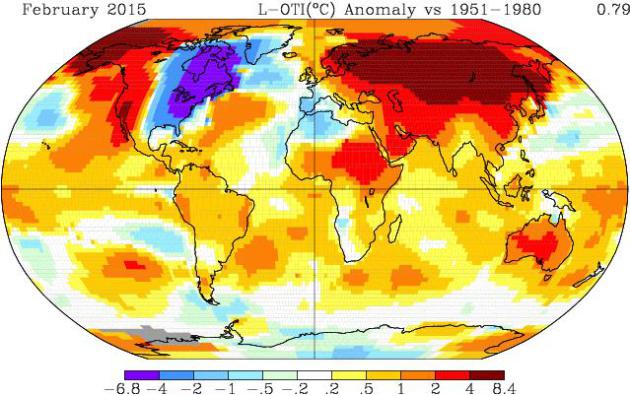

Cyclone Pam: Vanuatu’s President Blames Climate Change for Extreme Weather. Warmer oceans may be fueling more extreme hurricanes (called typhoons in the western Pacific and cyclones near Australia and India); sea level is rising, compounding storm surge damage. Here’s an excerpt from The Guardian: “…For leaders of low-lying island atolls, the hazards of global warming affect our people in different ways, and it is a catastrophe that impinges on our rights … and our survival into the future.” The cyclone caused major infrastructure damage to the island nation with up to 90% of structures believed to have been levelled in Efate. Winds were estimated to have reached 250km/h, according to the United Nations Office for the Coordination of Humanitarian Affairs. The damage is also extensive in the capital, Port Vila, which one Unicef officer said looked like it had been “hit by a bomb”…”
Photo credit above: “Samuel, only his first name given, kicks a ball through the ruins of their family home as his father, Phillip, at back, picks through the debris in Port Vila, Vanuatu in the aftermath of Cyclone Pam Monday, March 16, 2015. Vanuatu’s President Baldwin Lonsdale said Monday that the cyclone that hammered the tiny South Pacific archipelago over the weekend was a “monster” that has destroyed or damaged 90 percent of the buildings in the capital and has forced the nation to start anew.” (AP Photo/Dave Hunt, Pool)


Are Extreme Hurricanes, Typhoons and Cyclones Becoming More Extreme Over Time? The answer appears to be yes, although the science is still emerging. Fewer storms, but the big storms are hitting with greater ferocity. Here’s a link to an interesting paper at the Journal of Climate, courtesy of the University of Wisconsin.

Exponential Increase in a Hurricane’s Destructive Power. Here’s a nugget from the University of Rhode Island that made me do a triple-take, something many (meteorologists) don’t even realize – or communicate: “…An often-misunderstood aspect of hurricane winds is the potential for increased damage as wind speeds increase. The forces against structures do not increase linearly, they increase exponentially (power of 3), and as wind speed increases. A 241 kph (150 mph) wind is 20% stronger than a 201 kph (125 mph) wind. However, the destructive power of a 241 kph (150 mph) wind compared to a 201 kph (125 mph) wind is actually 73% greater...”

